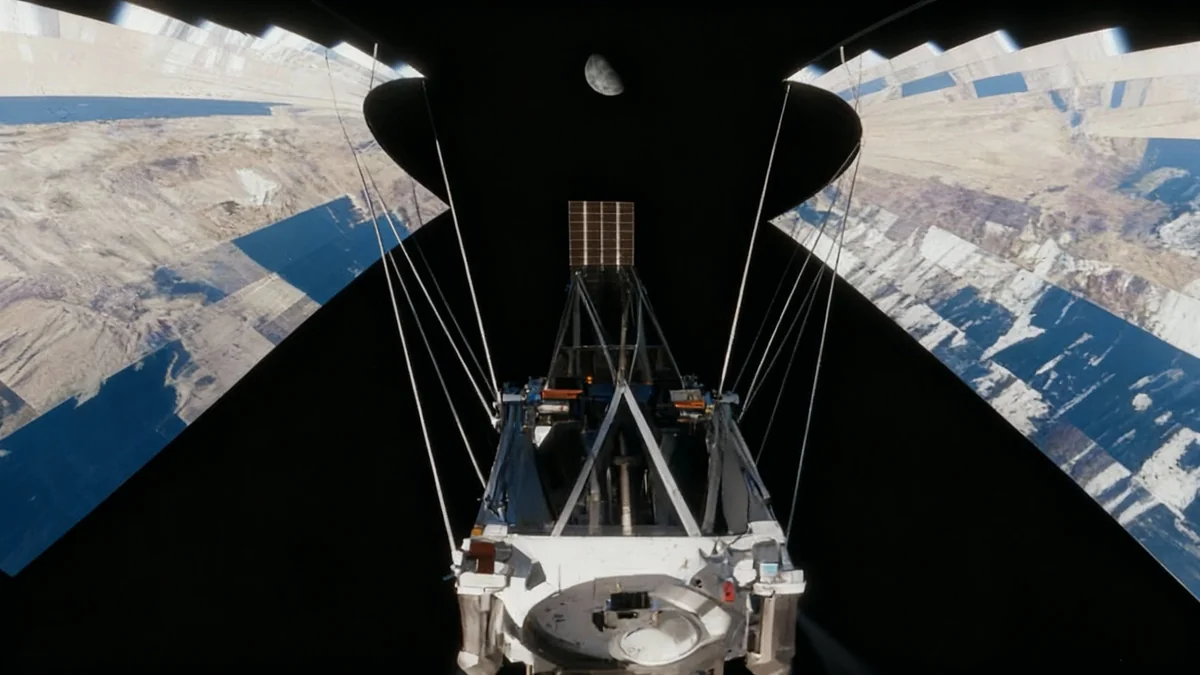A Bothell-based startup, Portal Space Systems, is developing a new type of propulsion technology designed to make moving satellites and other spacecraft between orbits more efficient. The company's Supernova spacecraft leverages solar energy, reviving and modernizing a concept that could significantly alter the dynamics of in-space logistics.
Founded four years ago, the company is focused on solving a critical challenge in the growing space economy: the ability to rapidly and affordably reposition assets in orbit. Their approach combines decades-old research with modern manufacturing techniques, including proprietary 3D-printed components, to create a system that generates thrust directly from sunlight.
Key Takeaways
- Portal Space Systems, a 4-year-old startup in Bothell, is developing a new solar-thermal propulsion system.
- The technology, featured in their Supernova spacecraft, uses mirrors to concentrate solar energy for thrust.
- This system aims to provide rapid and efficient orbital mobility for satellites.
- The company utilizes proprietary 3D-printed parts, including a unique HEX Thruster.
A New Approach to an Old Idea
The concept of using the sun's energy for propulsion is not new, but Portal Space Systems is introducing a novel implementation. The core of their technology involves capturing and focusing solar energy to generate thrust, a method known as solar-thermal propulsion. This technique has been explored in research for decades but has faced practical hurdles in becoming a mainstream solution.
Portal's Supernova spacecraft is designed with long, specialized mirrors that act as solar concentrators. These mirrors gather sunlight and direct it with high precision. The focused energy is then used to power a proprietary engine, which the company calls the HEX Thruster.
Solar-Powered Movement
Unlike traditional chemical rockets that carry their own fuel and oxidizer, or electric propulsion systems that require large solar panels and complex power processing units, solar-thermal propulsion aims for a more direct conversion of sunlight into kinetic energy. This could offer a balance of thrust and efficiency for certain in-space maneuvers.
The Supernova and Its HEX Thruster
The design of the Supernova spacecraft is distinctive. Renderings show a central body flanked by the prominent mirrors, which are essential for the system's operation. These mirrors are not just simple reflectors; they are engineered to capture a significant amount of solar radiation and focus it onto a single point within the thruster assembly.
At the heart of this system is the HEX Thruster. While the company keeps specific details of its internal workings proprietary, the fundamental principle involves using the concentrated solar heat to energize a propellant, expelling it at high velocity to produce thrust. This method allows for high-efficiency maneuvers without the need for volatile chemical fuels, which are costly to launch from Earth.
A significant innovation lies in the manufacturing process. Portal Space Systems relies heavily on 3D printing to create complex, lightweight, and highly durable components for the thruster and other systems. This modern approach allows for rapid prototyping and the creation of intricate geometries that would be difficult or impossible to produce with traditional manufacturing methods.
Unlocking In-Space Mobility
The ability to move spacecraft efficiently between different orbits is becoming increasingly important. As more satellites are launched for communications, Earth observation, and national security, the demand for in-space logistics and services is growing. This includes tasks like:
- Moving a satellite from its initial drop-off orbit to its final operational orbit.
- Relocating satellites to new positions to meet changing demands.
- Performing orbital debris avoidance maneuvers.
- De-orbiting old satellites at the end of their life to clear space.
Current propulsion systems often involve trade-offs. High-thrust chemical rockets are fast but inefficient for long-duration missions, while low-thrust electric systems are highly efficient but can take months to complete an orbital transfer. Portal Space Systems aims to fill a gap by offering a solution that provides faster transit times than low-thrust systems while maintaining high efficiency.
The Growing Need for Orbital Tugs
The industry refers to spacecraft designed for in-orbit transportation as "space tugs" or "orbital transfer vehicles." As the number of satellites in orbit is projected to grow exponentially, the market for these services is expected to expand significantly. An efficient and reusable tug could act like a tow truck in space, repositioning client satellites as needed.
Future Implications for the Space Industry
If successful, the technology being developed by Portal Space Systems could have wide-ranging implications. For commercial satellite operators, it could mean faster deployment of assets and greater flexibility in managing their constellations. For government and defense clients, it could enable rapid repositioning of strategic assets in response to changing geopolitical situations.
The development of advanced in-space propulsion is seen by many industry experts as a key enabler for the next phase of the space economy, unlocking possibilities for complex satellite servicing, assembly, and manufacturing in orbit.
As a young startup, Portal Space Systems is entering a competitive field with established aerospace giants and other ambitious newcomers. However, its unique focus on modernizing solar-thermal propulsion with proprietary 3D-printed technology gives it a distinct position. The company's progress will be closely watched as it moves from design and development to demonstrating its Supernova spacecraft in the challenging environment of space.





